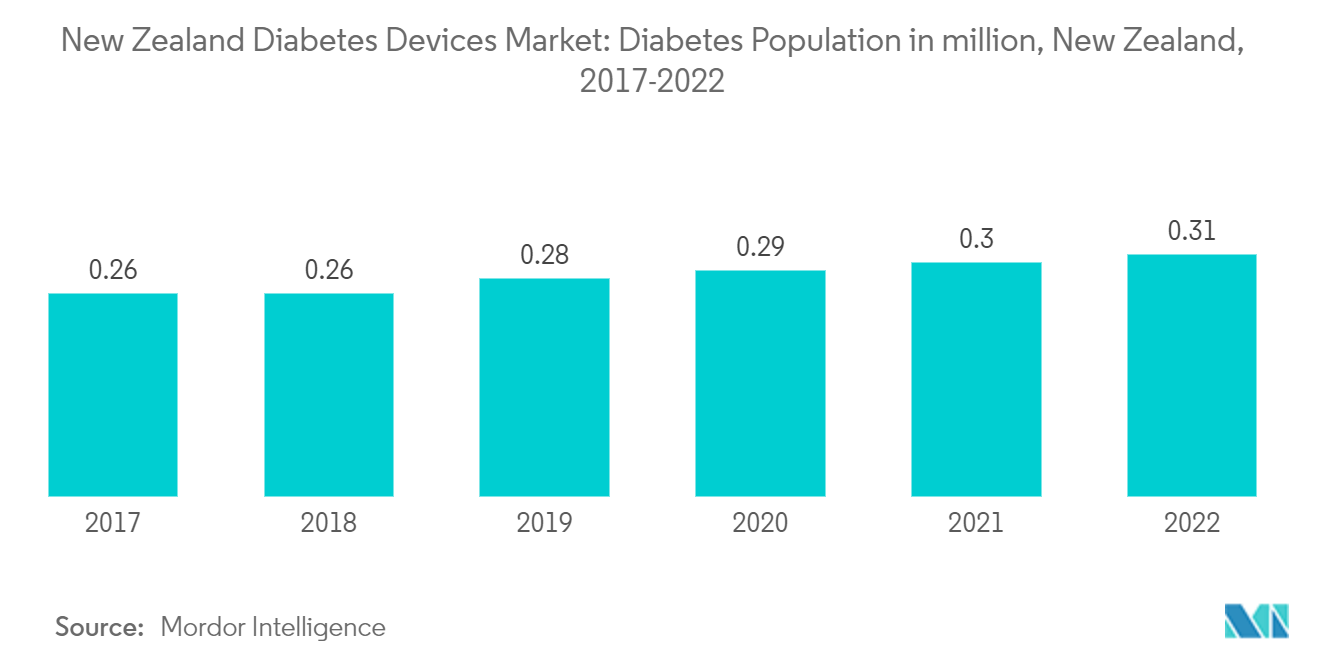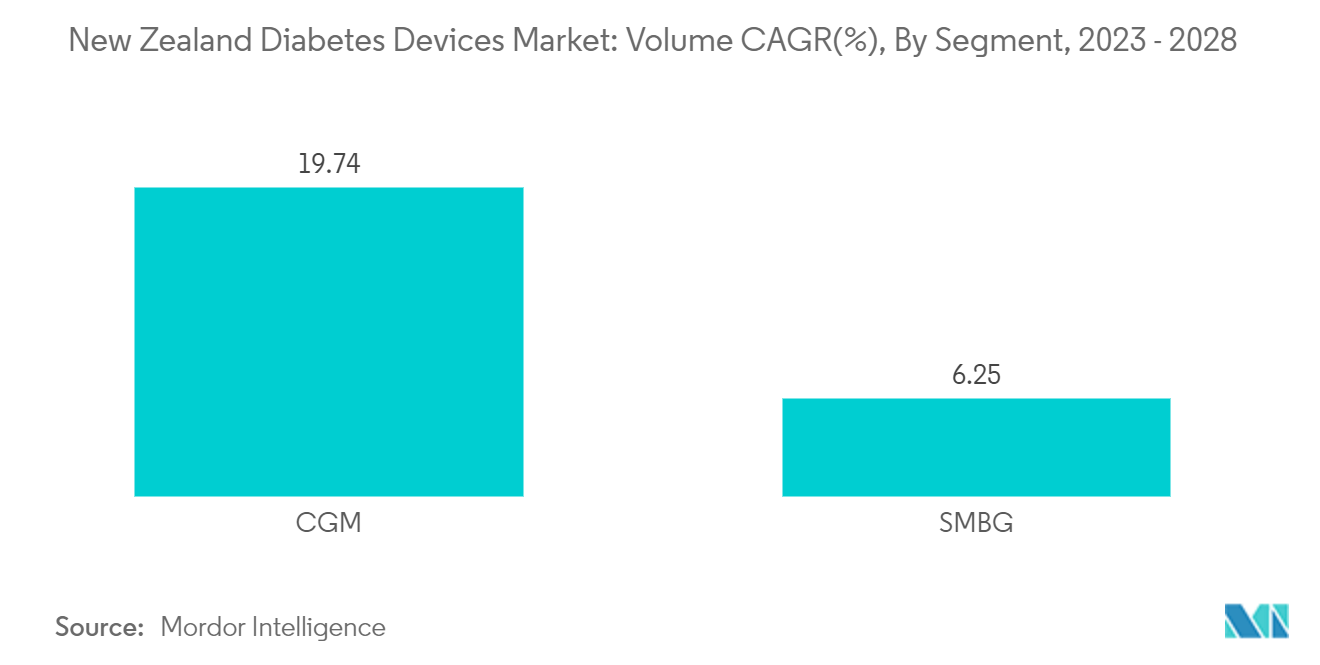Market Trends of New Zealand Diabetes Devices Industry
Rising diabetes prevalence
The diabetes population in New Zealand is expected to register a CAGR greater than 1.9% over the forecast period.
New Zealand is headed straight for the iceberg of expensive medical care. One condition that has grown significantly and is expected to continue to develop is diabetes, which is straining the healthcare system. Gold-standard care will only be accessible to an increasingly small number of people due to a declining workforce supporting an elderly population and a significant rise in the prevalence, with public resources being divided among hundreds of thousands of patients. By 2040, the number of New Zealanders with type-2 diabetes alone is expected to increase by 70-90% to over 400,000 persons.
Patients prefer self-monitoring blood glucose meters over continuous glucose monitors (CGM) because they are more cost-effective and easier to use. While test strips are intended for single use, the average glucose meter efficiency is between six months and three years. Since the market's acceptance rate is anticipated to increase throughout the forecast period, launching new lancet devices that cause less discomfort to consumers will aid market expansion. Companies are being encouraged to create innovative products due to strict government regulations and clear guidelines from the WHO about using diabetes medications and devices to increase patient compliance and reduce diabetic complications.
Owing to the rising prevalence of diabetes and the factors above, the market will likely continue to grow.

The CGM devices segment Witness Highest Growth Rate Over the Forecast Period
Continuous glucose monitors (CGM) detect the presence of glucose in tissue fluid to measure the body's glucose levels in real-time. A CGM typically provides a fresh glucose level every five minutes, or 288 times each day, unlike a blood glucose meter (BGM), which monitors the blood glucose level at a set time (when you prick your finger).
In New Zealand, medical aid does not cover CGM devices, and public healthcare facilities do not offer many payment choices. People frequently use private organizations like Givealittle to raise money for medical expenses associated with CGM devices required for type -1 diabetes children who require a single device. With CGM devices, diabetic patients in New Zealand pay between USD 4,000 and USD 5,000 each month out of their own pockets.
Diabetes has a significant impact on systemic health costs, but personal health costs are rising more quickly to close the gap. 20% of New Zealand's overall health expenditures is made up of private spending, of which 12-15% is directly out-of-pocket money. Explicit costs are augmented by significant personal loss from lost income resulting from problems that hinder activity and lost non-salary output from the inability to conduct tasks like household chores or volunteer work. The economic cost of lost personal salaries is projected to be $562 million in 2020, rise 47% to $755 million in 2040, and increase from $334 to $506 million in non-salary economic loss during the same time.


